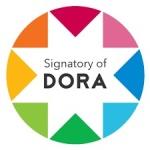Professional bureaucracy A support for the implementation of the lean six sigma method in higher education
Résumé
The objective of this study is to integrate the lean six sigma method into academic institutions in order to improve the quality of services. Given that professional bureaucracy is the best design for such organizations, it promotes the application of the lean six sigma method.
Based on the organization of the quality team of Lean six sigma with its hierarchical organization formed by Master Black Belt, Black Belt, Green Belt, Yellow Belt, Professional bureaucracy consists of technostructure which is composed of specialists who plan the work of employees.
To achieve this, changes are needed in the technostructure: defining work processes, defining the responsibilities of each member in the quality team, and introducing information systems capable of managing processes.
##plugins.generic.usageStats.downloads##
Références
Henry Mintzberg, structure et dynamique des organisation, edition organisation, France,2003.
Emmanuel Trélat, Contrôle optimal : théorie et applications, Sorbonne Universités, France, 2011.
http://www.cnam.fr/servlet/com.univ.collaboratif.utils.
Sandra Furterer , lean sigma in service six, CRC press, USA, 2009 .
Trevor Owens, The lean enterprise: how corporations can innovate like startups, Wiley, USA, 2014.
Matthew A. Barsalou, Root Cause Analysis: A Step-By-Step Guide to Using the Right Tool at the Right Time, CRC Press, 9 janvier 2015 .
http://www.operaepartners.fr/la-definition-du-lean-management.
http://www.utc.fr/~mastermq/public/publications.
Alan Larson, Demystifying Six Sigma,
Norma Simons, The Business Case for Lean Six Sigma in Higher Education , the global voice of quality, Vo. 6, No, USA, 3 May 2013.
CIAQES – MESRS ALGERIE, référentiel national.
Raphaël Valyi, ERP open source, Smile - Motoristes Internet, France, 2014, p 18.

Ce travail est disponible sous licence Creative Commons Attribution - Pas d’Utilisation Commerciale 4.0 International.















